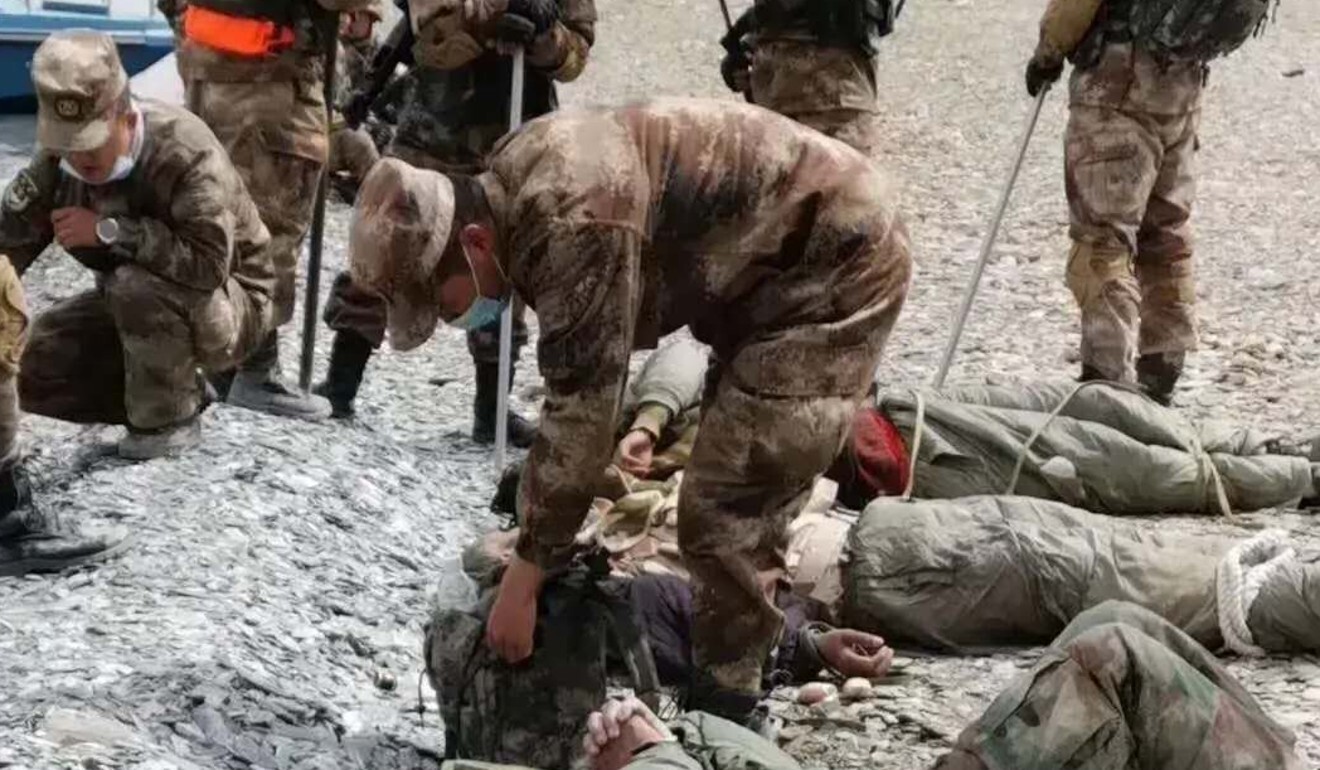
China plays it cool despite ‘alarm over India border stand-off’
- Confrontation comes as Beijing grapples with challenges on all fronts, including US
- But neither side likely to escalate tensions, observer says
It is not clear how the stand-off erupted on May 5 in the Galwan River valley on the border between Ladakh in Indian-administered Kashmir and China-administered Aksai Chin.
There have been several clashes in multiple spots along the border in the past month.
According to Associated Press, several Indian and Chinese soldiers were wounded in a high-altitude cross-border clash involving fistfights and stone-throwing at a remote but strategically important mountain pass near Tibet, the Indian Army said last month.
Neither country has protested over the clashes and Beijing said the situation was under control.
It is also the first face-off between them in the valley since they fought a war in 1962.
Wang Dehua, a South Asia specialist at the Shanghai Municipal Centre for International Studies, said that after the 1962 war, the Chinese military retreated from the eastern front but had kept a grip on the Aksai Chin area because it is a vital transport route.
Aksai Chin is strategic to both China and India. It has China’s only direct road link between Xinjiang and Tibet, both home to large ethnic minority groups that Beijing fears could be sources of “separatists”.
Harsh Pant, professor of international relations and a defence expert at King’s College London, said: “Stability in Tibet and Xinjiang is always a primary aspect of Chinese thinking when it comes to its peripheries vis-à-vis India.
“With India changing the administrative status quo in Jammu and Kashmir last year it is even more important for China now.”

Observers said Beijing was more offended by the most recent confrontation than the 2017 Doklam incident but it was unlikely to ramp up tensions with New Delhi as it dealt with the aftermath of the coronavirus pandemic and poor relations with the United States.
On Monday, Chinese foreign ministry spokesman Zhao Lijian repeated the official line that the overall situation at the Line of Actual Control in the area was “stable and controllable”.
Zhao added that communication through diplomatic and military channels between the two sides remained “smooth” and China would adhere to the consensus reached by the leaders of the two states.
China-India border dispute fuelled by rise in nationalism on both sides, observers say
When the clashes erupted in May, China already had its hands full with wrapping up final preparations for the long-delayed annual legislative gathering, the first annual economic plan without a specific growth target, and pushing through a national security law for Hong Kong.
“The economic outlook for China was already looking grim,” a Chinese source with knowledge of diplomatic discussions said.
Since then, senior American officials have announced punitive actions on Beijing over the law and threatened extra tariffs on Chinese goods if China fails to deliver its promises to buy US products under the terms of their phase one trade deal.

The bad timing for China was probably part of the reason why India could make a move and China chose not to take a more aggressive stance on the situation, the Chinese source added.
Lin Minwang, deputy director of Fudan University’s Centre for South Asian Studies, said China saw India’s move as an attempt to stab it in the back while China was trying to deal with the US.
“[But] both China and India have acted with certain restraint to control the impact. Probably they prefer not to escalate it too much,” Lin said.
But practically, India had an advantage of six to one in terms of the number of troops on the border, because for China it was too costly to maintain a big force in the most remote plateau, he added.
Border skirmish becomes battle of spin as Indian and Chinese soldiers turn to social media
Pant said China might have realised from the 2017 stand-off that an assertive public stance did not help public perception.
“Public remarks are calmer and the Chinese media is less gung ho about going to war,” he said. “China seems to have learnt from the Doklam crisis, where its public belligerence led it to losing the perception battle.”
During his trip to India in 2014, Chinese President Xi Jinping said he hoped the border issue would not spoil the ties between the two countries before a resolution was found.
He met Indian Prime Minister Narendra Modi again in 2017 in China to try to mend ties, months after the pair’s worst military confrontation around the border in years.



